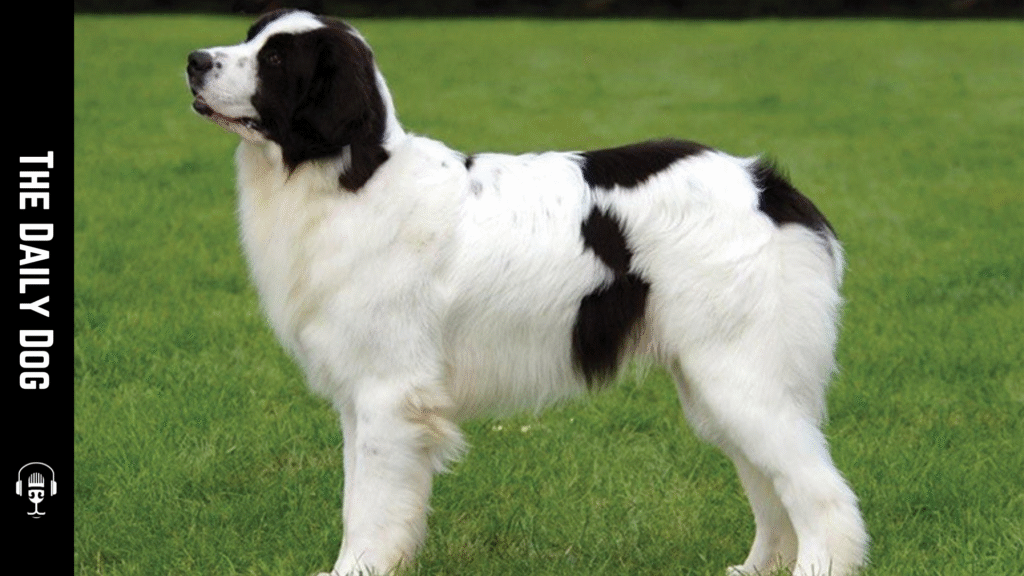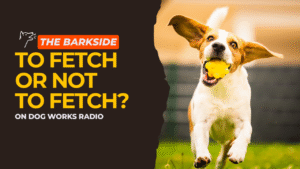In the world of large, devoted family dogs, the Landseer stands out for more than just its striking tuxedo-like appearance. This commanding, gentle giant embodies a heritage rooted in working strength, loyalty, and a temperament that harmonizes with active households and calm, patient ones alike. The Landseer is best understood not as a separate species, but as the black-and-white color variation of the Newfoundland, a breed renowned for its extraordinary capacity to blend power with tenderness. For families seeking a companion that can be both a protective presence and a devoted friend, the Landseer offers a rare combination of calm composure and steadfast reliability that endears it to many generations of dog lovers.
Origins and historical context
To appreciate the Landseer’s character is to acknowledge its lineage. Newfoundland dogs have long been celebrated for their strength, water rescue prowess, and remarkable affinity for humans. The Landseer’s white base coat marked with black patches emerged as a distinct pattern that painters and hobbyists alike began to associate with a particular visual identity. Named in honor of Sir Edwin Landseer, the famed British artist who captured such dogs in canvases of remarkable nuance, the Landseer color variant gained recognition as a noble representative of the Newfoundland breed. This lineage helps explain the breed’s hallmark traits: a robust frame, a gentle temperament, and an instinctive love of water. While some registries treat the Landseer as a separate designation, most recognize it as the color variant of the Newfoundland. What never changes is the breed’s signature blend of impressive size, loyal temperament, and a warmth that makes it a beloved family member.
A temperament for life
The Landseer’s personality is shaped by a combination of size, history, and social disposition. These dogs tend to be exceptionally patient, especially with children, which makes them exceptional family companions when properly socialized from puppyhood. They are typically affectionate and eager to please, traits that contribute to a cooperative training experience when consistent, positive methods are employed. The Landseer’s temperament is often described as even-tempered, steady, and remarkably gentle. Yet beneath that serene exterior lies a dog with a determined, protective streak. While their guardians may jokingly refer to them as “couch guardians” for their tendency to remain near family members, the Landseer’s sense of responsibility is genuinely protective rather than aggressive. This balance, calm demeanor with quiet vigilance, renders the Landseer particularly well-suited to households that seek a dignified, unobtrusive presence who nevertheless will stand as a steadfast guardian when called upon.
Grooming, coat care, and seasonal shedding
The Landseer’s striking coat is one of its most defining features, but it also demands a thoughtful approach to care. The double coat provides excellent insulation, a practical feature for the breed’s historic work in varied climates. The outer coat is water-resistant, while the dense undercoat creates a warm barrier against cold water and wind. This combination means that owners should anticipate substantial seasonal shedding, particularly during the spring and fall when coat renewal accelerates. Regular brushing—at least a few times a week, with more frequent sessions during shedding seasons—helps manage mats and loose hair, keeps the coat shiny, and supports skin health by distributing natural oils. Bathing is not a frequent requirement; infrequent baths prevent stripping the coat of its natural oils. When bathing is necessary, a high-quality dog shampoo paired with a careful rinse is essential to avoid skin irritation. Dental hygiene, nail trimming, ear care, and routine veterinary checkups complete the grooming regimen, ensuring overall well-being and comfort.
Nutrition and weight management are foundational to a Landseer’s health
As a large breed with a propensity toward obesity if not carefully managed, the Landseer’s diet should be tailored to its age, activity level, and metabolism. Puppies typically require more frequent meals to support rapid growth, while adults benefit from two well-balanced meals per day. Selecting a high-quality dog food formulated for large breeds helps ensure appropriate nutrient ratios, digestibility, and joint-supporting ingredients such as glucosamine and chondroitin. It is essential to monitor portion sizes and avoid free feeding, which can inadvertently lead to weight gain. Regular weight checks, guided by a veterinarian, provide a practical measure of a dog’s health and fitness. Because Landseers can have a substantial appetite and a tendency to become sedentary if not engaged, a structured exercise plan is vital. A balanced approach combining daily walks, enrichment activities, and controlled play protects joint health and supports longevity.
Exercise needs that respect size and health
The Landseer is built for endurance rather than sprinting, and its exercise routine should reflect this preference. Daily walks mixed with opportunities for gentle swimming and water-based activities take advantage of the breed’s natural affinity for aquatic environments. Swimming is often an ideal exercise because it provides a low-impact cardio workout that supports joint health, an important consideration for large dogs prone to hip and elbow issues. Structured play, puzzle toys, and obedience training sessions contribute to mental stimulation, which helps prevent boredom and related behavioral challenges. While the Landseer is capable of impressive feats of strength, it benefits from a consistent routine that emphasizes safety and gradual progression. Early socialization, obedience training, and exposure to a range of environments contribute to a well-adjusted adult dog that remains confident and well-mannered in diverse settings.
Health considerations unique to the breed
Being a large, long-backed breed with a double coat, the Landseer shares common health concerns with other Newfoundland types. Hip dysplasia and elbow dysplasia are conditions that can affect mobility and comfort in adulthood. Regular veterinary screening, including orthopedic evaluations as recommended by a professional, helps identify these issues early when interventions may be more effective. Elbow and hip health benefit from continued attention to appropriate weight, controlled exercise, and a nutrient-rich diet that supports joint function. Eye conditions, including progressive retinal atrophy and cataracts, can occasionally affect Landseers as they age, so routine eye examinations are prudent. Bloat, a condition where the stomach twists or fills with gas, is a potential risk in deep-chested breeds. Practicing slow feeding, using specialized bowls, and avoiding vigorous exercise immediately after large meals can reduce susceptibility. Regular dental care, skin checks, and ear cleaning also contribute to a long, healthy life. Working closely with a veterinary professional who understands large breeds ensures that any breed-specific concerns are caught early and managed effectively.
Housing and family dynamics
The Landseer thrives in homes that can accommodate a dog of substantial size and gentleness. They typically do well in both urban and rural environments, provided they have a safe, comfortable space to stretch their legs and a predictable routine. A securely fenced yard offers a safe outlet for physical activity, particularly during puppyhood when curiosity leads to exploration. Because of their love of companionship and tendency to form deep bonds with family members, Landseers prefer being near their people rather than being left alone for long stretches. They are not best suited for households that require extreme agility or frenetic, high-energy routines; rather, they fit naturally into environments that value a calm, supportive presence. Proper socialization with children, other pets, and visitors ensures smooth interactions and enhances the dog’s confidence in varied social situations.
Training that respects size, intelligence, and sensitivity
Training a Landseer is a rewarding experience, provided methods are patient, positive, and consistent. Their intelligence means they can learn quickly, especially when training emphasizes rewards-based techniques such as praise, treats, and play. Early socialization is essential, exposing the dog to people, other dogs, and diverse environments to foster a well-rounded temperament. Because Landseers respond well to kind, confident leadership, owners should establish clear boundaries and routines from the outset. This approach reduces the risk of stubborn behaviors that can arise in a breed with strong-willed tendencies. Training should cover basic obedience, leash manners, recall, and, for families with children, child-dog safety rules. Professional instruction or participation in a well-structured training class can provide valuable socialization opportunities and help owners fine-tune techniques for this large, sensitive breed.
Grooming as a reflection of care and pride
Beyond the practicalities of coat maintenance, grooming a Landseer is an opportunity for bonding with your dog. The meticulous brushing routine not only reduces shedding but also allows you to monitor skin health, detect lumps or signs of irritation, and build trust through gentle handling. Because Landseers shed year-round with seasonal peaks, a consistent grooming schedule reduces the burden of fur around the home and improves comfort for your dog. Nail care, ear cleaning, and dental hygiene contribute to overall health and wellbeing. A well-groomed Landseer is more than a pretty picture of a black-and-white marvel; it’s a reflection of a caregiver’s commitment to the dog’s comfort, health, and happiness.
Choosing a Landseer: what to look for in a breeder or rescue
Prospective Landseer owners should emphasize health, temperament, and responsible breeding practices. Reputable breeders prioritize the health of their lines, providing health clearances for hip and elbow status, eyes, and heart where appropriate. They should welcome questions about the lineage, the health history of both parents, and the socialization plan for puppies. If adopting from a rescue or breed-specific organization, inquire about the dog’s background, age-appropriate exercise, and behavioral history. A responsible caretaker will discuss considerations such as age-appropriate training, the level of grooming required, and the long-term commitments necessary to care for a large breed with the potential to live 8 to 10 years or more with proper care.
Seasoned guardianship and timeless companionship
The Landseer’s enduring appeal lies in its combination of majesty and tenderness, a paradox that captivates experienced dog owners and families alike. Its size commands respect, but its heart invites trust and affection. When integrated into a home with appropriate structure, daily activity, and ongoing care, the Landseer can become a cherished member of the family, offering steadfast companionship through the seasons. The dog’s resilience, gentle nature, and readiness to participate in family life create a dynamic that many owners describe as both soothing and uplifting. This is a breed that can inspire a sense of calm in a bustling household while providing a powerful, protective watchfulness that never feels intrusive.
The Landseer as a living symbol of balance
In a culture that often prizes speed, intensity, and constant novelty, the Landseer represents a countercurrent: strength without aggression, loyalty without possessiveness, and a presence that elevates the atmosphere of a home rather than dominating it. This balance makes the Landseer an appealing choice for families seeking a dog with the dignity of a large, noble breed and the warmth of a faithful confidant. As with any canine companion, success hinges on thoughtful preparation, realistic expectations, and ongoing engagement. Prospective guardians should invest in a plan that includes quality nutrition, routine veterinary care, a structured exercise regime, and regular socialization opportunities. When these elements align, the Landseer has the potential to brighten a home for more than a decade, leaving memories of faithful companionship and a living embodiment of steadfast devotion.
Final reflections: an invitation to consider the Landseer
For the right family, the Landseer embodies a rare blend of power, grace, and heart that few breeds can match. Its distinctive coat marks it as instantly recognizable, but it is the dog’s demeanor, gentle, attentive, and intrinsically devoted, that truly defines the breed. If you are drawn to a dog that can handle both the demands of a large, active household and the quiet moments of shared companionship, the Landseer warrants serious consideration. Before bringing one into your life, take stock of your environment, activity level, and long-term commitments. Align your expectations with the breed’s needs, and you will discover a canine partner that offers not just beauty, but a lifelong bond built on trust, affection, and mutual respect. The Landseer is more than a striking appearance in black and white; it is a living testament to companionship, resilience, and the enduring bond between human and dog.










